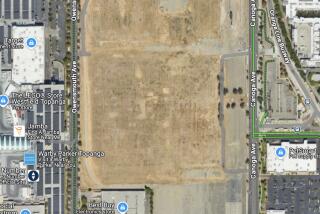Questions Raised About Rocketdyne
- Share via
With the attention being paid to the cancer study of Rocketdyne employees, many people may have missed a corollary issue:
The U.S. Department of Energy is proposing trucking low-level radioactive wastes out of Rocketdyne, up to the 118 freeway and to waste facilities.
The draft environmental assessment for transport of these wastes is available for public review and the public comment period ends Monday.
It is important that the wastes be removed from Rocketdyne but the report does not indicate what route or routes will be used to the 118, how many trucks will be employed, over what period of time this will occur or the credentials necessary for truck drivers carrying this toxic load.
It does indicate that exposure to contamination in a half-mile radius would occur within 30 minutes if 100% of the contents were exposed to the environment, such as if the truck were to have an accident.
Community input is important to make sure that the DOE--which is more a friend to Rocketdyne than it is to the community--acts responsibly and with as much concern for the public safety and health as it evinces for Rocketdyne’s well-being.
Go to the public library to review the study and call Carol Ward at the DOE, (510) 637-1812, to voice your concerns and ask for an extension of the public comment period.
WILLIE LAPIN, Susana Knolls
*
While there are technical flaws in the UCLA study of cancer deaths of the Rocketdyne radiation workers, a major finding of the study has gone unnoticed.
As a group, the Rocketdyne radiation workers are living longer than expected. The death rate of the radiation workers is actually 32% less than the U.S. population.
The UCLA researchers labeled this the “healthy worker” effect, because workers are healthier than the average population. But when the radiation workers are compared against another group of nonradiation workers, the Rocketdyne group had a death rate that was 21% less.
This effect is not a statistically vague few deaths by cancer, but hundreds of people who are still alive today because they were radiation workers at Rocketdyne.
Wouldn’t you like to know why? I would. I’m a Rocketdyne radiation worker.
BOB TUTTLE, Moorpark
More to Read
Inside the business of entertainment
The Wide Shot brings you news, analysis and insights on everything from streaming wars to production — and what it all means for the future.
You may occasionally receive promotional content from the Los Angeles Times.









